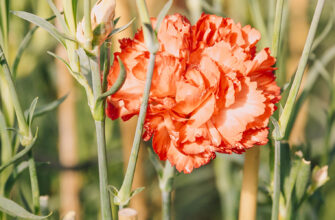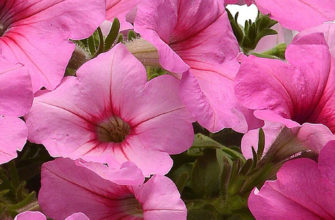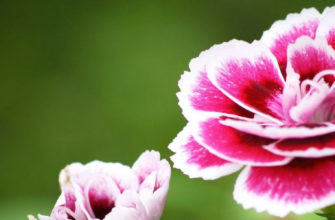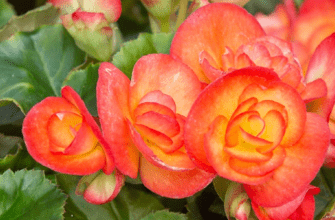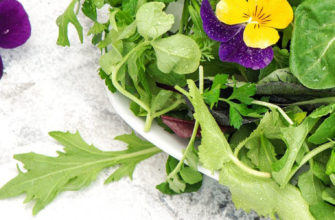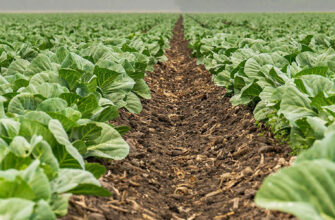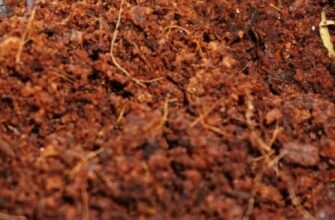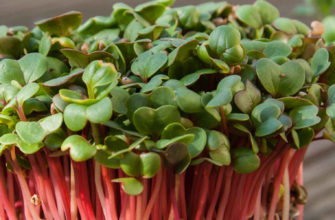An experienced gardener knows that garden work doesn’t end in autumn. Sowing flowers before winter allows them to bloom early in spring, reducing your workload during the busy season. Additionally, late-sown flowers are hardier than those planted in summer. In this article, we’ll explore why sowing flowers in autumn is beneficial, which flowers are suitable for this method, and how to do it effectively.
- Advantages of Autumn Sowing
- Disadvantages of Autumn Sowing
- When to Sow Flower Seeds in Autumn
- Preparing the Site for Autumn Sowing
- How to Sow Flower Seeds in Autumn
- Spring Care for Autumn-Sown Flowers
- Which Flowers to Sow in Autumn
- Annual Flowers for Autumn Sowing
- Alyssum (Lobularia)
- Annual Aster (Callistephus chinensis)
- Marigolds (Tagetes)
- Godetia
- Calendula (Marigold)
- Cosmos (Cosmea)
- Lavatera (Wild Rose)
- Eschscholzia (California Poppy)
- Perennial Flowers for Autumn Sowing
- Aquilegia (Columbine)
- Alpine Aster
- Gypsophila (Baby’s Breath)
- Heuchera
- Gentian (Gentiana)
- Delphinium
- Carpathian Bellflower
- Lavender
- Lupine
- Primula
- Garden Chamomile (Matricaria)
Advantages of Autumn Sowing
- Time Savings: Flowers require significant care. Sowing them in autumn eliminates the need to grow seedlings indoors, freeing up space on your windowsills for other heat-loving plants.
- Hardier Seedlings: Plants sown in late autumn or winter are more resistant to temperature fluctuations, diseases, and pests.
- Early Blooming: Winter-sown flowers bloom 1-2 weeks earlier than those planted in spring via seedlings.
- Seed Stratification: Some flowers require stratification (a period of cold) before germination. While spring sowing may require refrigerating seeds, winter sowing allows this process to occur naturally in the soil.
- Using Expiring Seeds: Autumn is a great time to sow seeds nearing the end of their storage life.
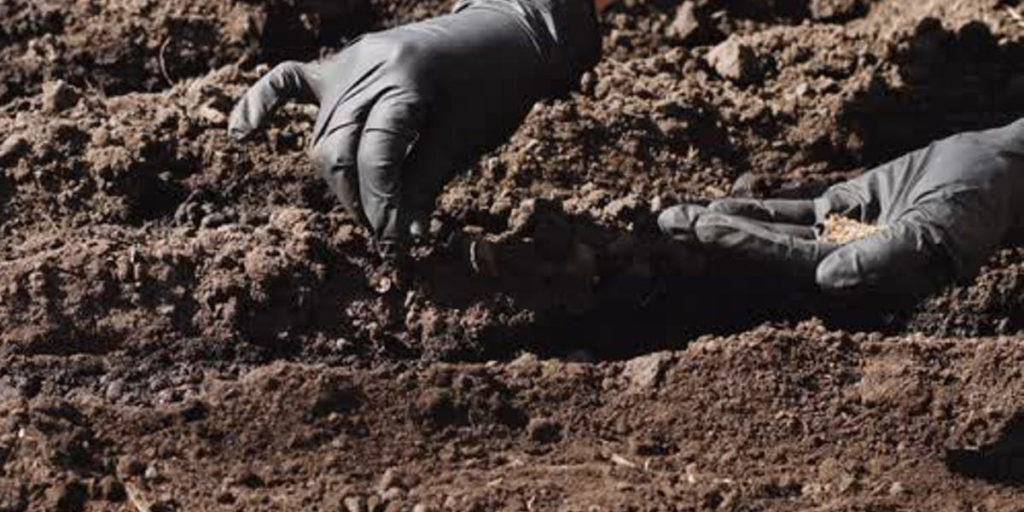
Disadvantages of Autumn Sowing
- Weather Risks: Sudden weather changes in late autumn or winter, such as thaws followed by severe frosts, can cause seeds to germinate prematurely and then freeze at an early stage.
- Weed Competition: In gardens heavily infested with weeds, they may grow alongside your flowers in spring, requiring careful weeding to avoid damaging delicate seedlings.
When to Sow Flower Seeds in Autumn
The ideal time for autumn sowing is when stable low temperatures (close to 0°C) set in, but before heavy frosts. Depending on your region, this typically falls between late October and early
November. Sowing too early risks early germination, which can lead to seedlings freezing in winter. Ensure the forecast shows no significant warming after sowing, as seeds need to remain dormant during winter.
Preparing the Site for Autumn Sowing
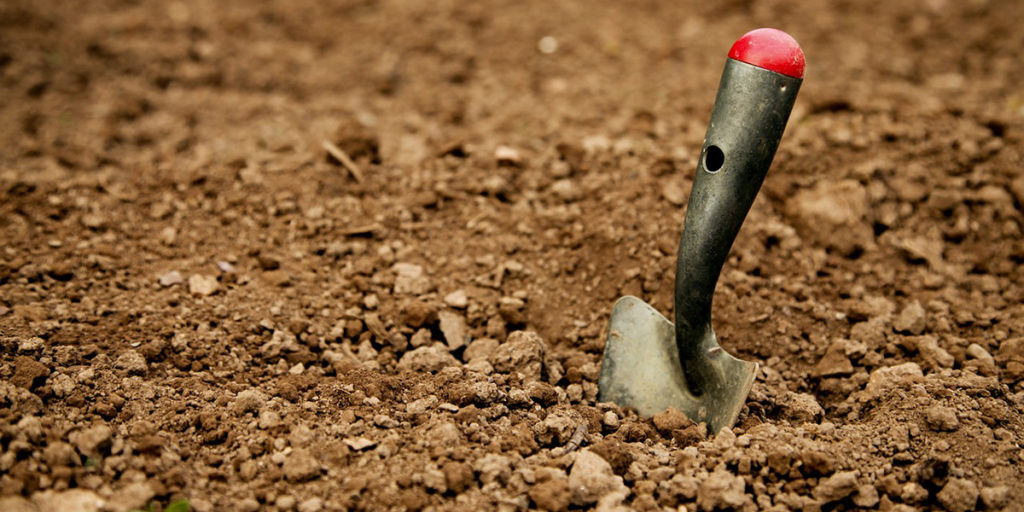
Prepare the soil in advance, as sowing occurs in frozen ground, which is difficult to loosen. Choose a location sheltered from strong winds and slightly elevated to prevent waterlogging, which can cause seeds to rot. Ideally, create a raised bed (15-20 cm high) with borders to prevent water accumulation and promote faster soil warming in spring.
Before sowing, research the flower’s needs. Some tolerate transplanting well, while others (e.g., delphinium) should be sown directly in their permanent location. Clear the bed of plant debris and weed roots to avoid competition in spring. Dig the soil thoroughly, adding 4-6 kg of compost per square meter or 15-20 g of phosphorus-potassium fertilizers. For heavy soils, mix in river sand to improve drainage.
How to Sow Flower Seeds in Autumn
Do not soak or pre-germinate seeds; sow them dry to prevent premature germination. Ensure dry weather during sowing. Since autumn sowing carries a risk of freezing, increase the seed sowing rate by 25-50%. Due to soil compaction in winter, reduce the sowing depth compared to spring planting.
Cover seeds with a thin layer of peat, sand, compost, or a mix of these. Protect the sowing area from frost with agrotextile, fallen leaves, or straw. Avoid watering after sowing to prevent early germination and freezing.
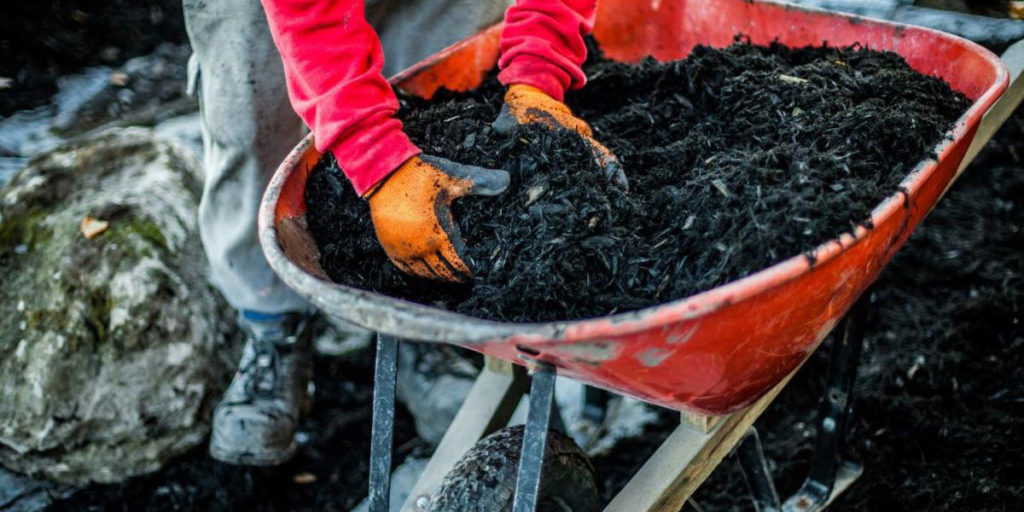
Spring Care for Autumn-Sown Flowers
Once snow melts in spring, remove the agrotextile. Initial watering is unnecessary, as the soil retains ample moisture from melted snow. To speed up germination, install hoops over the rows and cover them with plastic film or agrotextile to warm the soil and retain moisture. After seedlings emerge, thin or transplant them as needed.
Which Flowers to Sow in Autumn
For autumn sowing, choose seeds of cold-tolerant annual and perennial flowers that can withstand excess moisture. Below, we list suitable flowers and their cultivation specifics.
Annual Flowers for Autumn Sowing
Annual cold-tolerant flowers with a short development period from germination to blooming are ideal for autumn sowing. They can be sown directly in flowerbeds or transplanted later, though some (e.g., delphinium) do not tolerate transplanting well.
You can also sow seeds in containers or pots, which should be buried in the ground with drainage holes to prevent waterlogging. Here are some annual flowers suitable for autumn sowing:
Alyssum (Lobularia)
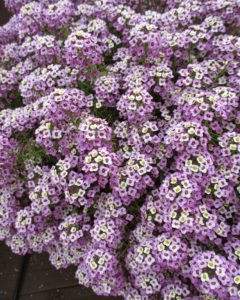
Alyssum is perfect for dry, rocky areas and is popular among gardeners. It blooms from early May until frost.
Autumn sowing produces healthy, resilient seedlings in spring. Its tiny seeds should be mixed with sand before sowing. Choose loose, well-drained beds for optimal blooming.
Sow in frozen soil and mulch with peat, compost, agrotextile, or film. Thin seedlings to prevent fungal diseases, following a 15×20 cm spacing pattern.
Annual Aster (Callistephus chinensis)
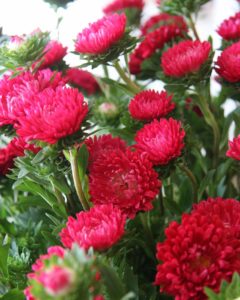
Known as the “star” flower (from Greek kallos meaning beauty and stephos meaning crown), this Chinese native is common in urban flowerbeds, borders, and containers. Autumn sowing reduces the risk of fusarium wilt.
Select a sunny site where marigolds or calendula grew previously, and raise beds by 15-20 cm. Disinfect the soil with a fungicide like Fitosporin before sowing. Use a 20×35 cm spacing pattern, sow at a 2 cm depth, cover with dry soil, and mulch with sawdust or light peat.
Marigolds (Tagetes)
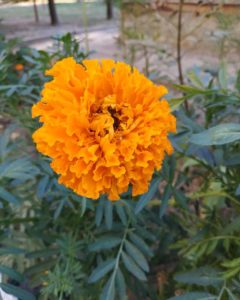
Marigolds are not only beautiful but also beneficial, as their roots repel nematodes and reduce plant diseases. Infusions from marigolds can be used to combat pests on vegetables. As heat-loving plants, they are suitable for autumn sowing only in southern regions.
Erect, spreading, or thin-leaved marigolds thrive in partial shade but bloom best in full sun. Sow after the first frosts in furrows, cover with soil stored in a warm place, and protect with agrotextile or a mini-greenhouse.
Godetia
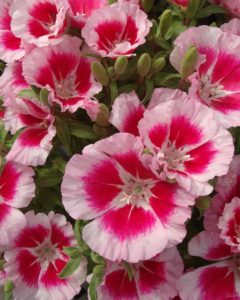
With vibrant colors, godetia enhances any flowerbed, pot, or container.
Like marigolds, it prefers warm winters, so it’s best suited for southern regions.
Sow directly in a permanent sunny location at a depth of 0.5 cm. Insulate sowings to protect from frost and excess moisture.
In spring, thin seedlings to maintain a 25 cm spacing.
Calendula (Marigold)
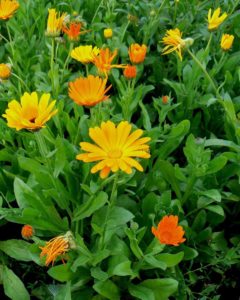
Named “nail” in Ukrainian for its claw-like seeds, calendula is easy to grow, even for beginners. Cold-tolerant and ideal for autumn sowing, it thrives in any soil and tolerates transplanting well. Sow when the average daily temperature is 0°C and light frosts occur at night.
At temperatures above +5°C, seeds may germinate prematurely and suffer from frost. Sow dry seeds in 4 cm deep holes, spaced 15-25 cm apart, cover with dry soil, and mulch with compost or straw.
Fun Fact: Planting calendula around vegetable plots repels Colorado potato beetles.
Cosmos (Cosmea)
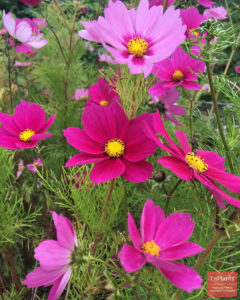
Cosmos is a low-maintenance, self-seeding flower often seen near homes and in urban flowerbeds.
Sow directly in a sunny, permanent location with light soil. Place 3-4 seeds per hole, spaced 30-40 cm apart, at a depth of 0.5 cm.
Cover with soil and insulate with straw or agrotextile.
Avoid over-fertilizing, as it leads to excessive foliage growth rather than blooming. Thin seedlings in spring for lush blooms.
Lavatera (Wild Rose)
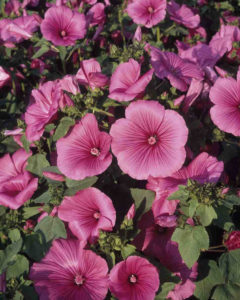
Easy to grow in flowerbeds or pots, lavatera produces large flowers from late spring to mid-autumn.
It thrives in well-lit areas with loose soil.
Fertilize only if the soil is poor.
Sow seeds at a 1 cm depth in their permanent location, covering with film or agrotextile for winter protection.
Thin seedlings in spring to a 20×25 cm spacing.
Drummond Phlox
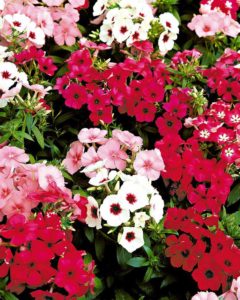
As German collector K. Foster said, “A garden without phlox is a mistake.”
Drummond phlox, the only annual among 50 phlox species, is cold-tolerant and ideal for autumn sowing in late November.
Choose a site with medium soil—not too heavy to avoid rot or too light to prevent drying out.
Sow 2-3 seeds in small furrows, spaced 15 cm apart, and insulate with film-covered hoops. Thin seedlings in spring, keeping the strongest ones.
Eschscholzia (California Poppy)
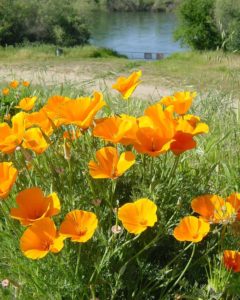
Autumn sowing is ideal for eschscholzia, as its seeds undergo natural stratification, leading to earlier blooming. Sow directly in a permanent, sunny location, as it dislikes transplanting. Mix seeds with sand and sow in shallow furrows, mulching with a thick layer of dry leaves.
Fun Fact: Eschscholzia blooms only on sunny days, closing its fiery buds at sunset.
Perennial Flowers for Autumn Sowing
Perennials sown in autumn grow stronger and more resistant to diseases and temperature changes. Here are some suitable options:
Aquilegia (Columbine)
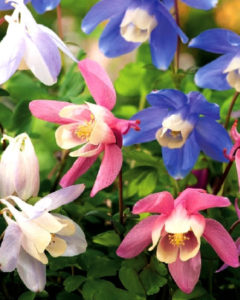
Known as “watershed” for collecting rainwater in its blooms, aquilegia is perfect for borders and flowerbeds. Autumn sowing is preferred due to its need for stratification.
Sow directly in a permanent, semi-shaded location with fertile, loose soil. Sprinkle seeds on the surface, covering with a 0.5 cm layer of soil. If rainfall is low, lightly water after sowing.
Mulch with leaves, straw, compost, or agrotextile. Thin seedlings in spring, spacing low-growing varieties 25 cm apart and tall ones 40 cm apart.
Alpine Aster
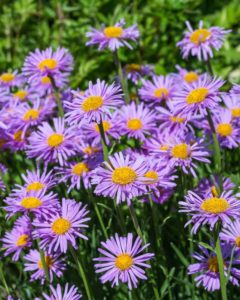
Native to alpine slopes, this frost-resistant aster thrives in flowerbeds for years.
Its tiny seeds are best sown in pots or boxes buried in the ground or directly in a sunny, elevated location with some shade tolerance.
seeds on the surface, cover with a thin layer of peat, and mulch with compost or leaves.
An interesting fact: In China and Japan, the alpine aster is called the “flower of love.” Their ancestors believed that a drink made from the petals of this plant was a love potion that could rekindle fading feelings between spouses or make a boy or girl fall in love.
Gypsophila (Baby’s Breath)
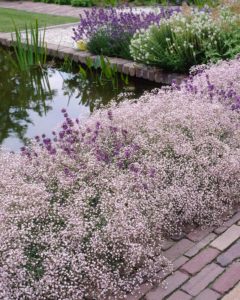
Known as “tumbleweed” for its large, spherical bushes, gypsophila dislikes transplanting, so sow it in a permanent, sunny location with sandy loam soil.
Add lime (25-50 g/m²) if the soil lacks it.
Scatter seeds on the surface, cover with a 0.5 cm layer of soil, and space plants 70 cm apart.
Heuchera
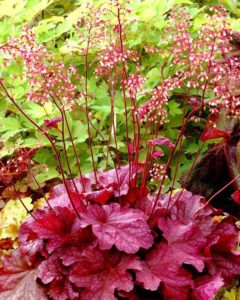
A decorative foliage plant popular in borders and rock gardens, heuchera is frost-resistant and suitable for autumn sowing.
Sow its tiny seeds in a sunny location for vibrant leaf color, pressing them lightly into the soil without covering.
No winter insulation is needed.
Thin seedlings in spring to a 20-25 cm spacing.
Gentian (Gentiana)

Perfect for rock gardens, gentian benefits from autumn sowing for prolonged stratification, leading to May-June germination.
Sow in a shaded area, covering seeds with a thin layer of soil. Insulate with spruce branches or leaves in snowless winters.
Thin seedlings to a 15-25 cm spacing.
Delphinium
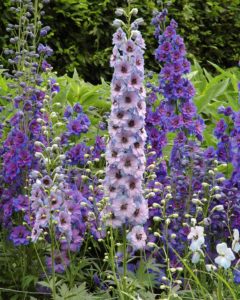
Cold-tolerant to -50°C, delphinium requires stratification, making autumn sowing ideal.
Sow in a permanent, sunny, wind-sheltered location with light, loose soil at a 2-3 mm depth.
Mulch for winter protection.
Fun Fact: Named for its dolphin-shaped buds, delphinium was used in medieval times to heal wounds.
Carpathian Bellflower
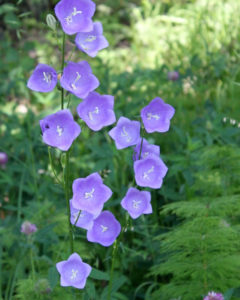
Low-maintenance and sun-loving, this perennial blooms twice per season in fertile soil.
Mix its tiny seeds with sand and sow on the surface, mulching with compost or peat.
Add sand to heavy soils for better drainage.
Lavender
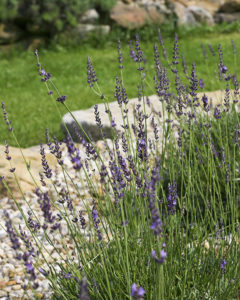
This evergreen shrub, used in medicine, perfumery, and cosmetics, thrives in autumn sowing in southern regions.
Choose a sunny, wind-protected site with light, humus-rich soil.
Neutralize acidic soils with wood ash or lime.
Sow in late October in 3-4 mm deep furrows, cover with river sand, and mulch with sawdust or straw.
Thin seedlings to a 30-40 cm spacing.
Fun Fact: Store a lavender sprig in a sugar jar for a week to create lavender sugar for baking.
Lupine
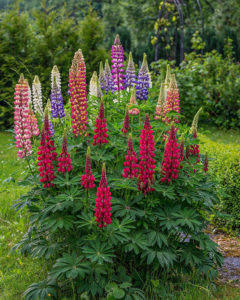
With striking flower spikes, lupine enriches soil with nitrogen.
Sow in a sunny location with neutral soil at a 2 cm depth, spacing plants 25-30 cm apart.
September-October sowing yields blooms by late summer.
Primula
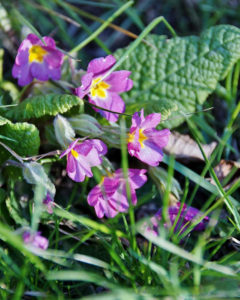
This alpine flower requires stratification, making autumn sowing ideal.
Sow in boxes placed in partial shade to protect tender seedlings from spring sun.
Use loose soil, as heavy soils hinder germination.
Sprinkle seeds on the surface, cover with a thin layer of light soil, and provide careful watering in spring.
Fun Fact: In England, primula leaves are used in salads, and roots as a spice.
Garden Chamomile (Matricaria)
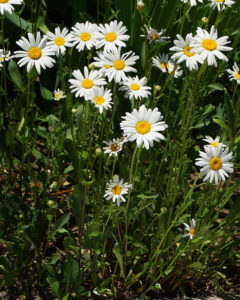
This low-maintenance perennial forms aromatic bushes ideal for group plantings and bouquets.
Sow in late autumn on sunny, fertile soil with neutral pH at a 1 cm depth.
Space plants 8-10 cm apart initially, thinning to 40-50 cm for abundant blooming.
Autumn sowing of flowers aligns perfectly with your project on growing plants, as it covers seed preparation, sowing, and care. By choosing cold-tolerant annuals and perennials, you can enjoy early blooms, hardy plants, and reduced spring workload. Incorporate flowers like calendula and marigolds into your vegetable garden to repel pests, and explore culinary uses, such as lavender sugar or primula salads, to enrich your project’s recipe section.
If you have found a spelling error, please, notify us by selecting that text and pressing Ctrl+Enter.

